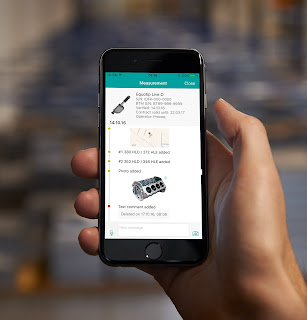Eddy Current Testing Overview and Techniques
Eddy current testing or electromagnetic testing is based on the science of electric current being induced in conductors when the magnetic field around them changes. This flow of eddy current with changing magnetic field finds application in locating and sizing minute cracks and defects existing on the surface, can estimate the thickness of coatings, and can assist in determine the material make up (i.e. alloy) a test element. The current is characterised by closed loops that start to make a magnetic field of their own. As a result, the magnetic field produced by the eddy current and the initial magnetic field opposes each other. The eddy current produced by a material in its pure form will differ from the eddy current produced by the material when present in an altered or defect form. This difference in the creation of a magnetic field is what gets primarily used for NDT or non-destructive testing of materials. How the process works? In order to produce eddy current, alt...
